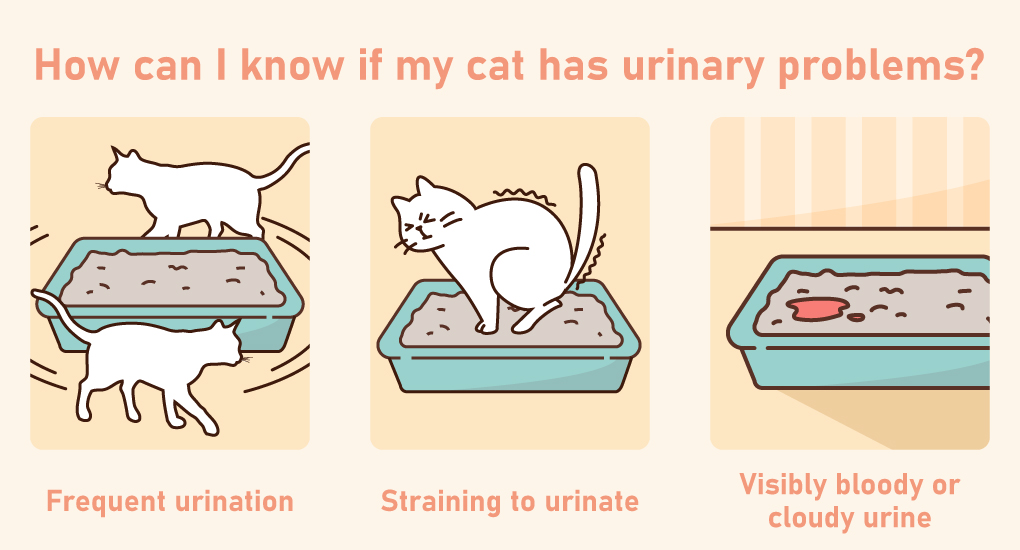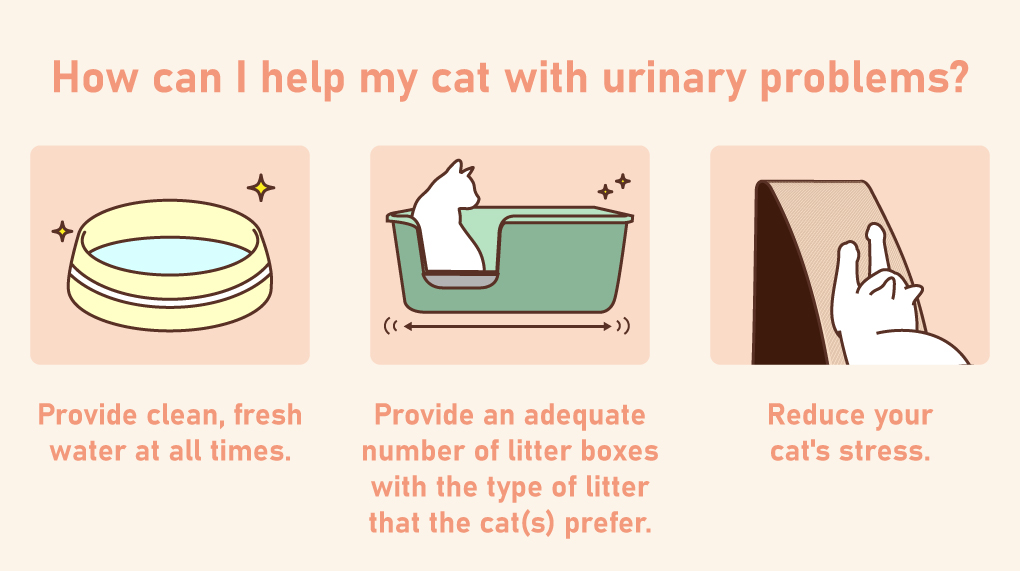Observing the Daily Water Intake and Urination of cats; Early Detection of Cat Urinary Problems; and Prevention of Cat Kidney Disease.
Urinary tract problems are very common among cats, and severe cases can result in cat kidney disease. Fortunately, these problems can be detected by observing cat water intake and urination. As such, we examine cat water consumption per day when determining the presence or absence of cat urinary problems.
Feline lower urinary tract syndrome (FLUTD) generally refers to a variety of conditions that affect the bladder and urethra of cats. This article addresses how to prevent urinary tract problems in cats and rightly care for sick cats.
The first step I take during a cat examination in the clinic is to assess the cat's health based on its hydration.
Start by observing the skin's rebound speed.
- Gently grab a small portion of the cat's skin around its shoulder, pull it up, and then let go. If the cat is hydrated, the skin should snap back into place quickly. If the skin falls back down slowly, the cat is likely dehydrated.
- Then look at the cat's eye socket. It should look healthy, not sunken. A sunken eye socket is an indication of a serious dehydration problem.
- Finally, check the cat's gum. Press its gum gently, then release. A healthy gum will quickly turn from white to pink. If the blood returns slowly, the cat's hydration status is definitely poor.
On average, one in three cats suffers from chronic kidney disease. However, clinical symptoms are usually not obvious in the early stages.
By monitoring the water intake and urination status of cats, we can detect urinary tract problems early.
Frequent drinking and urinating may indicate renal insufficiency. If this is accompanied by weight loss and poor physical strength, besides kidney problems, it may also be a sign of diabetes or poor circulation.
Urination frequency, color, and smell can also help us evaluate the health condition of the cat's urinary tract. Cats usually urinate 2–4 times a day. If a cat runs to the cat litter frequently, it may be suffering from urinary tract inflammation, stones, or even a lower urinary tract obstruction.
Urine color is normally clear and colorless to amber (yellowish). A dark brown urine may be an indication of jaundice and hemolytic disease; pink-colored urine may be a sign of urinary tract infection or kidney stones; a cloudy appearance indicates pyuria or the presence of excess urine sand in it.
Finally, a more pungent urine smell may also be a sign of a possible urinary tract infection.
How can I know if my cat has uninary problems?

Feline lower urinary tract disease (FLUTD) is a common problem in cats, especially male cats, affecting the bladder or urethra. Cats with FLUTD often have difficulty urinating, increased frequency of urination, blood in the urine, abnormal urination patterns, or frequent licking of the urinary opening. In severe cases, urinary tract obstruction may occur and lead to acute abdominal pain, vomiting, and even acute kidney failure in cats.
There are many causes of FLUTD, of which feline idiopathic cystitis (FIC) is the most common. FIC is a sterile bladder inflammation that occurs in cats between the ages of 2 and 6 and may recur repeatedly. Although the cause of the condition remains uncertain, it is believed to be related to stress. Asides FIC, urinary tract stones, bacterial cystourethritis, and tumors may also cause FLUTD.
Fortunately, most cats with FLUTD can recover after diagnosis and treatment by a veterinarian. However, FLUTD is a serious disease that requires timely treatment when it occurs to prevent missing the golden window for treatment! As such, prevention is better than cure.
How can I help my cat with urinary problems?

Start by improving the cat's physical and psychological health, thereby reducing the risks of FLUTD recurrence.
From a physiological aspect, you can improve the cats' daily water intake by increasing the number of pet water bowls, using automatic cat water fountains, or increasing the proportion of wet food. In addition, you can help to boost your cat's urinary tract health by choosing prescription cat food, canned food, or dietary supplements suitable for urinary care.
The cat litter boxes should be one plus your number of cats i.e., if you have two cats, then you need three cat litter boxes. The litter box size should be 1.5 times the cat's total length of the cat's body (including the tail), and the litter box should be kept clean at all times.
Also, from a psychological aspect, it is very important to keep cats happy and reduce their stress. Provide your cats with scratching boards to relieve stress and give them places to hide, rest, and climb.
If you have a new arrival in the house, pay special attention to whether such changes make your cat anxious. Finally, if any symptom(s) recur, seek the assistance of a veterinarian as soon as possible!

Sarcopenia in Aging Dogs and Cats: Hidden Risks of Muscle and Joint Degeneration and Strategies for Care!What Is Sarcopenia? It’s More Than Just “Getting Thinner!
As dogs and cats grow older, many pet owners notice reduced activity levels and apparent weight loss. While these changes are often dismissed as normal signs of aging, they may actually indicate a more serious condition — sarcopenia. Sarcopenia is the gradual loss of muscle mass and strength caused by aging or chronic illness. Unlike general weight loss, which may involve fat or overall body mass, sarcopenia specifically targets muscle tissue. This means that even if a pet’s body weight appears stable, they could still be experiencing significant muscle loss.

The Complete Guide to Spaying and Neutering Your Pets: Surgery, Operative Care and Long-Term Health
Do cats and dogs really need to be spayed or neutered?” It’s one of the most frequent questions pet owners ask. Spay and neuter procedures go far beyond birth control—they are closely tied to better behavior, longer lifespans, and overall well-being. But surgery is only the first step. Lasting health depends on attentive post-operative care and the right nutritional support. Without it, pets may face higher risks of metabolic imbalances and chronic conditions. In this article, we’ll cover why and when spaying or neutering is truly necessary, how to prepare before and after surgery, a complete guide to operative care, and the common causes of slowed metabolism after the procedure—along with practical nutrition tips to help your furry companions stay healthy for years to come.







